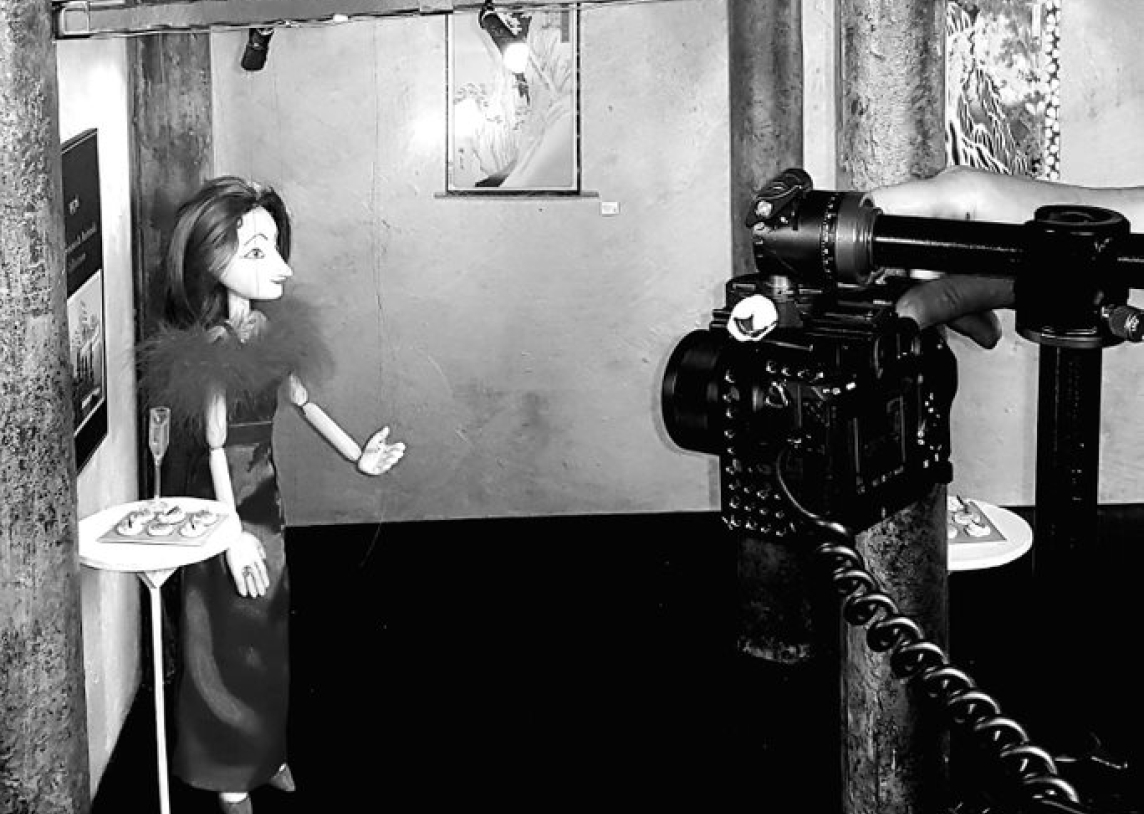News
The Fantastic Life of Minnie Rubinski
The Fantastic Life of Minnie Rubenski
Gareth K Vile
Performed at manipulate, February 2023
The Fantastic Life of Minnie Rubenski, created by Scottish veterans Vision Mechanics and based on the biography of a remarkable woman, clearly expresses both the potential of the animated puppet and the imaginative brilliance of the company: a series of short films, starring puppets, it ranges from Minnie’s early academic and domestic life, through to her later life fantasies of adventure and rescue. Allowing the viewer to choose their own path through the episodes, it articulates the confusion of memory, the thin line between desire and experience, but ultimately relates a tale of ambitions both thwarted and achieved. Moving, attentive to detail and a spectacular display of a concentrated artistic vision, it is simultaneously an epic and intimate triumph.
Because It uses both ‘visual theatre’ – in the screens and the sculpture-like scenography – and puppetry, Minnie expresses the dynamic and creative tension in the contemporary puppetry medium. Above all, the use of puppets allows the scenes to pursue flights of fancy that would be difficult to stage with human performers – or at least expensive. When Minnie flies to the rescue of a lover and investigates an international drug cartel, the company can manipulate models for a dramatic chase through jungles, the sea and the sky. Even the particular movement of the puppets becomes part of the heightened realism. Like a series of paper theatres, each film houses Minnie within a consistent reality, hyper-saturated with meaning.
And even in the absence of facial expression, emotions are expressed through the physicality of the puppets: a hand gesture, a nod of the head, the slouching in a chair. With no dialogue necessary, each scene is an allusive and suggestive episode, of a clear emotional tone and, often, a writhing energy that contains Minnie’s longings and strength.
Yet alongside the gifts of the puppet aesthetic, Vision Mechanics can recognise and use potential of film and an awareness of the performance environment to intensify Minnie’s narrative. The material of the setting is warm and enclosing – a brain that is a comforting womb, while the headphones for each screen remove the viewer from a public space into a personal cocoon of music and sound. There are layers of aesthetics, the puppet beneath the film, above the music, inside the venue, surrounding the viewer: each interacts and contributes to an affect that is emotive and impressive. Neither exclusively a puppet show, nor abandoning the discipline of detail demanded by the marionette. The Fantastic Life of Minnie Rubinski speaks to the power of multiple media to operate at multiple emotional and material levels.

